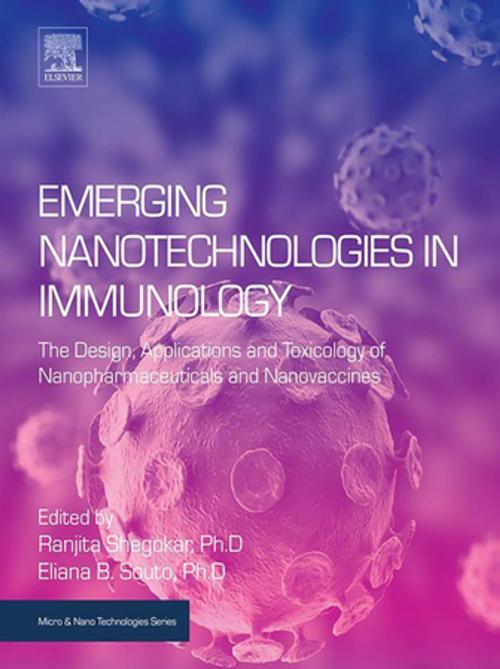Emerging Nanotechnologies in Immunology
The Design, Applications and Toxicology of Nanopharmaceuticals and Nanovaccines
Nonfiction, Health & Well Being, Medical, Specialties, Toxicology, Science & Nature, Technology, Material Science| Author: | ISBN: | 9780323401135 | |
| Publisher: | Elsevier Science | Publication: | May 17, 2018 |
| Imprint: | Elsevier | Language: | English |
| Author: | |
| ISBN: | 9780323401135 |
| Publisher: | Elsevier Science |
| Publication: | May 17, 2018 |
| Imprint: | Elsevier |
| Language: | English |
Emerging Nanotechnologies in Immunology aims to deliver a systematic and comprehensive review of data concerning the nature of interaction and nano-related risks between the nanophamaceuticals currently in the pipeline of S&T development for skin, ocular, and nasal drug delivery, including absorption, toxicity, and the ability to distribute after systemic exposure.
The scientific development of manufactured nanomaterials for drug delivery is increasing rapidly. One of the most prominent applications is topical drug delivery, where cutaneous, ocular, and nasal exposure becomes even more relevant. These targets are the first barrier that nanoparticles encounter when in contact with the human body.
The contributors addresses a representative set of the broad spectrum of nanopharmaceuticals currently being used, including cationic lipid nanoparticles, polymeric PLGA, PLA nanoparticles, biomacromolecules-based nanoparticles, and other scaffolds tissue engineered skin substitutes. Regulation and risk is also covered, since the safety of these nanophamaceuticals still represents a barrier to their wide innovative use.
- Provides the reader with a thorough knowledge of the safety aspects of nanopharmaceuticals which are currently under research
- Focuses on the characterization and quantification of the nanopharmaceuticals
- Allows readers to understand the correlation between the nature of the materials and their potential nanotoxicological effects.
- Includes an overview of regulatory aspects related to the R&D of nanopharmaceuticals.
Emerging Nanotechnologies in Immunology aims to deliver a systematic and comprehensive review of data concerning the nature of interaction and nano-related risks between the nanophamaceuticals currently in the pipeline of S&T development for skin, ocular, and nasal drug delivery, including absorption, toxicity, and the ability to distribute after systemic exposure.
The scientific development of manufactured nanomaterials for drug delivery is increasing rapidly. One of the most prominent applications is topical drug delivery, where cutaneous, ocular, and nasal exposure becomes even more relevant. These targets are the first barrier that nanoparticles encounter when in contact with the human body.
The contributors addresses a representative set of the broad spectrum of nanopharmaceuticals currently being used, including cationic lipid nanoparticles, polymeric PLGA, PLA nanoparticles, biomacromolecules-based nanoparticles, and other scaffolds tissue engineered skin substitutes. Regulation and risk is also covered, since the safety of these nanophamaceuticals still represents a barrier to their wide innovative use.
- Provides the reader with a thorough knowledge of the safety aspects of nanopharmaceuticals which are currently under research
- Focuses on the characterization and quantification of the nanopharmaceuticals
- Allows readers to understand the correlation between the nature of the materials and their potential nanotoxicological effects.
- Includes an overview of regulatory aspects related to the R&D of nanopharmaceuticals.















